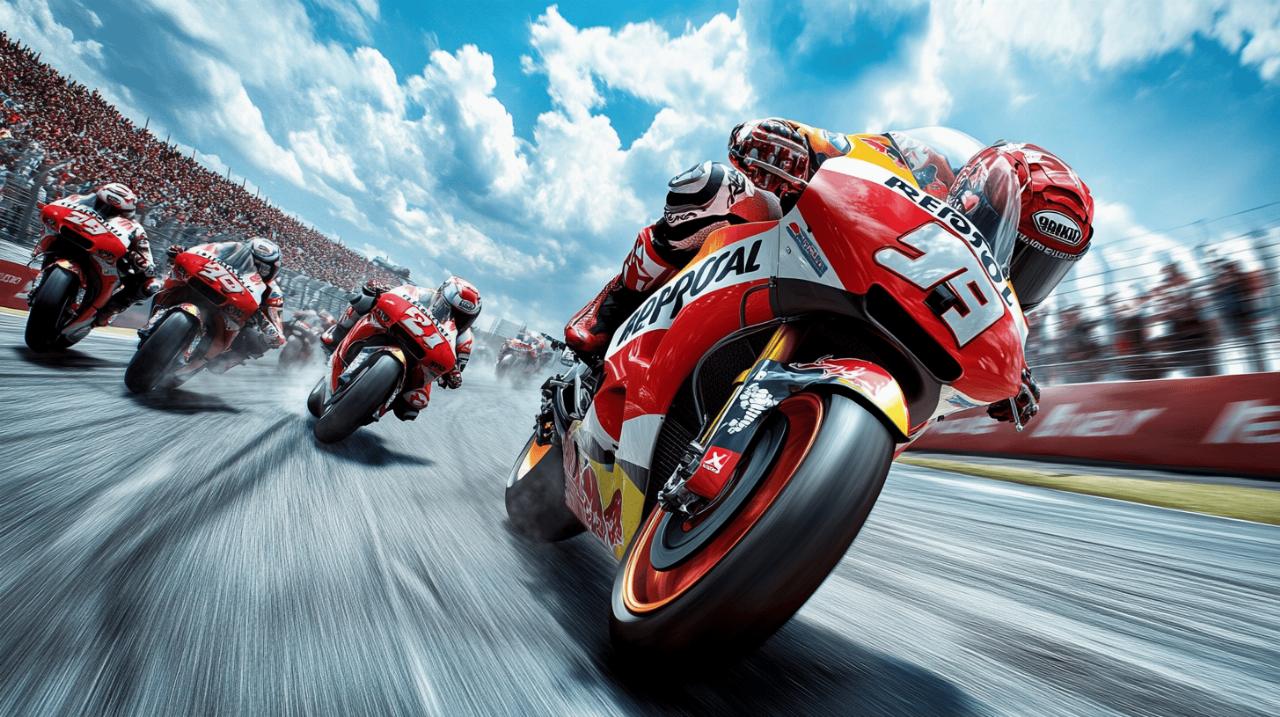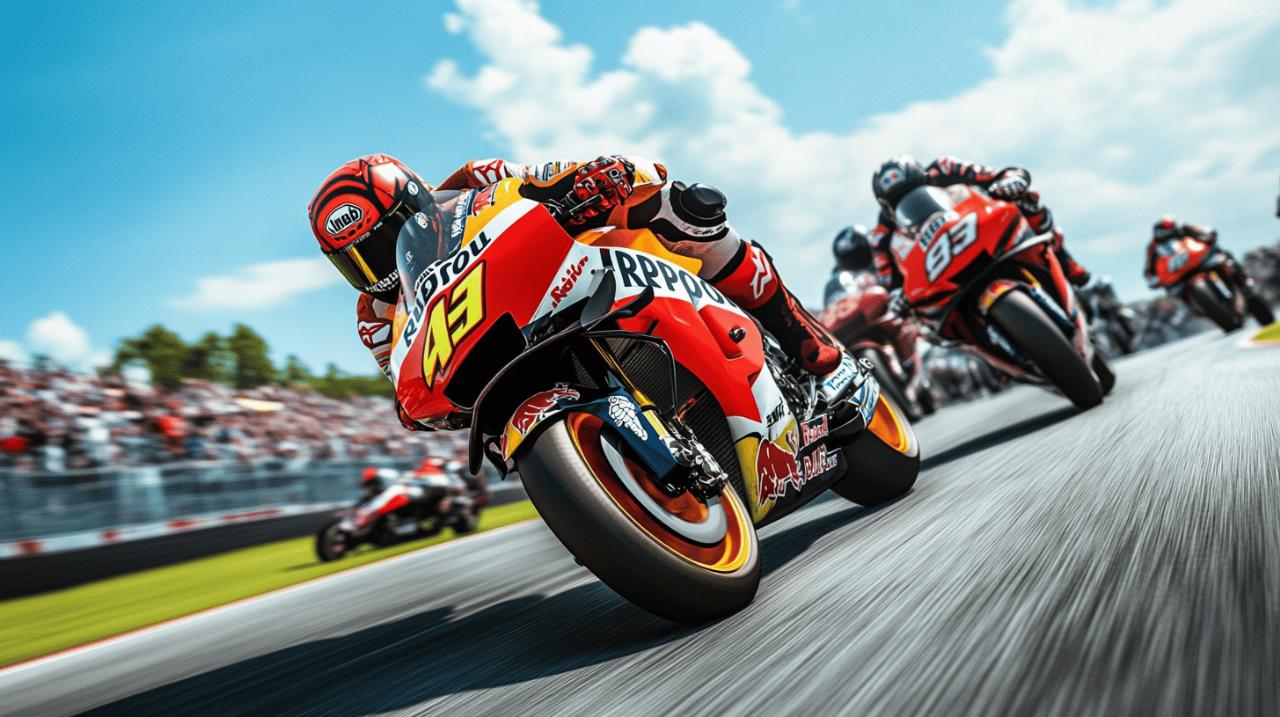The world of MotoGP stands as the pinnacle of motorcycle racing, where speed, skill, and cutting-edge technology converge on some of the most challenging circuits across the globe. For enthusiasts and casual followers alike, understanding the intricate web of regulations that govern this thrilling sport enhances appreciation for the spectacle unfolding every race weekend. From the roar of finely tuned engines to the strategic decisions made in fractions of a second, every element of MotoGP operates within a carefully constructed framework designed to ensure fairness, safety, and excitement. This comprehensive guide takes you through the essential rules that define the FIM Grand Prix World Championship, shedding light on the machinery, the athletes, and the procedures that make each Grand Prix a captivating contest.
Technical regulations: the engineering behind motogp machines
At the heart of MotoGP lies a relentless pursuit of engineering excellence, where manufacturers push the boundaries of what is mechanically possible while adhering to strict technical specifications. These regulations exist not only to maintain competitive balance but also to ensure the sport remains a proving ground for innovations that eventually trickle down to road-going motorcycles. The FIM, in collaboration with Dorna Sports, IRTA, and the MSMA, continuously refines these rules to reflect advances in technology and the evolving priorities of sustainability and safety. The 2027 regulatory overhaul exemplifies this commitment, as the sport prepares to transition towards more road-relevant and eco-friendly technologies, a shift that will redefine the machines that thunder down the straights and carve through corners with breathtaking precision.
Engine specifications and power unit restrictions
MotoGP motorcycles are currently powered by engines with a maximum displacement of one thousand cubic centimetres, representing the absolute zenith of naturally aspirated four-stroke performance. Each bike must meet a minimum weight of one hundred and fifty-seven kilogrammes, a threshold that challenges engineers to balance structural integrity with the quest for lightness. Riders are allocated seven engines per season, though manufacturers with lower constructor points benefit from concessions that allow them nine or even ten power units, along with greater freedom in testing and aerodynamic development. This concession system aims to level the playing field, enabling less dominant teams to catch up technologically while preventing runaway advantages. Fuel capacity is capped at twenty-two litres per race, demanding meticulous fuel mapping and strategic energy management throughout each Grand Prix. Looking ahead to twenty twenty-seven, the regulations will see a reduction in engine size to eight hundred and fifty cubic centimetres and a decrease in the number of engines to six, alongside a mandatory switch to one hundred percent non-fossil fuels. Fuel tank capacity will also shrink to twenty litres, reflecting a broader commitment to environmental responsibility without sacrificing the visceral excitement that defines the championship.
Aerodynamics, electronics, and tyre allocation rules
Aerodynamics have become a defining battleground in modern MotoGP, with manufacturers deploying elaborate winglets and bodywork designed to generate downforce and enhance stability at high speeds. However, the upcoming regulatory changes will impose tighter controls on these aerodynamic devices, ensuring that performance gains remain within manageable limits and that the emphasis returns to rider skill and mechanical refinement. Electronics play an equally crucial role, with sophisticated traction control, anti-wheelie systems, and engine braking management allowing riders to extract maximum performance while maintaining control in the most demanding conditions. Michelin serves as the official tyre supplier, providing teams with twenty-two slick tyres per Grand Prix, comprising ten front and twelve rear units, alongside thirteen rain tyres split into six fronts and seven rears. Riders advancing through the qualifying sessions of Q1 and Q2 receive an additional front and rear slick tyre, offering a small but significant advantage in the quest for pole position. Intermediate tyres were removed from the allocation in twenty seventeen, simplifying tyre strategy but requiring teams to make decisive choices when weather conditions fluctuate. Tyre pressures are closely monitored, with regulations ensuring safety and fairness, as Piero Taramasso has explained in various technical briefings, underscoring the critical balance between performance and durability.
Rider Requirements: What It Takes to Compete at the Highest Level
Becoming a MotoGP rider demands far more than raw talent and a fearless disposition. The pathway to the premier class is rigorous, requiring years of dedication, proven success in junior categories, and adherence to a comprehensive set of licensing and safety standards. The FIM oversees this progression, ensuring that only those who have demonstrated exceptional skill and maturity earn the privilege of competing on the world stage. Beyond the technical qualifications, the physical and mental demands of piloting a MotoGP machine at speeds exceeding three hundred kilometres per hour necessitate an elite level of fitness and an unwavering focus that few athletes in any sport can match.
Licensing, age restrictions, and mandatory safety qualifications
Aspiring MotoGP competitors must hold an appropriate FIM licence, typically earned through success in feeder series such as Moto3, Moto2, or equivalent national championships. There are minimum age requirements that govern entry into each class, ensuring riders possess the maturity and experience necessary to handle the pressures of Grand Prix racing. Mandatory safety qualifications include comprehensive training in track safety, flag protocols, and emergency procedures, with riders required to demonstrate proficiency in understanding and responding to the various signals communicated during a race weekend. Wildcard entries, which allow guest riders to compete in select rounds, are subject to additional scrutiny and must meet the same stringent standards. The concessions framework also influences rider opportunities, as manufacturers with lower constructor points can field wildcards more freely, providing a pathway for emerging talent to showcase their abilities on the grandest stage.
Physical fitness standards and medical clearance protocols
The physical demands of MotoGP racing are extraordinary, requiring riders to maintain peak cardiovascular fitness, muscular endurance, and mental sharpness throughout a gruelling season. Medical clearance protocols are rigorous, with each competitor undergoing thorough examinations before being declared fit to race. Dr Angel Charte, among other medical officials, oversees accident procedures and ensures that injured riders receive immediate attention, with strict guidelines governing when a rider may return following an incident. The warm-up session on Sunday morning offers a final opportunity for riders to assess their condition and for medical staff to observe their readiness, with any concerns potentially resulting in a withdrawal. The ten-minute duration of this session, though brief, serves as a critical checkpoint in the race day schedule, balancing preparation with the need to conserve energy for the main event.
Race Weekend Regulations: From Practice Sessions to the Chequered Flag
 A Grand Prix weekend unfolds according to a meticulously structured timetable, each session serving a distinct purpose in the build-up to the main race. From the opening practice on Friday through to the chequered flag on Sunday, teams and riders navigate a series of sessions designed to optimise performance, determine grid positions, and ultimately crown a victor. The addition of Sprint races in twenty twenty-three introduced a new dynamic, offering fans an extra dose of high-speed competition on Saturday while awarding championship points to the top nine finishers. This format, which sees Sprint races run at half the distance of the main event, has injected fresh excitement into the weekend schedule, rewarding consistency and tactical acumen across both contests.
A Grand Prix weekend unfolds according to a meticulously structured timetable, each session serving a distinct purpose in the build-up to the main race. From the opening practice on Friday through to the chequered flag on Sunday, teams and riders navigate a series of sessions designed to optimise performance, determine grid positions, and ultimately crown a victor. The addition of Sprint races in twenty twenty-three introduced a new dynamic, offering fans an extra dose of high-speed competition on Saturday while awarding championship points to the top nine finishers. This format, which sees Sprint races run at half the distance of the main event, has injected fresh excitement into the weekend schedule, rewarding consistency and tactical acumen across both contests.
Session structure, grid penalties, and starting procedures
Friday begins with two practice sessions, the first lasting forty-five minutes and the second extending to sixty minutes, providing teams with valuable data on track conditions, tyre performance, and bike setup. Saturday opens with a thirty-minute Free Practice 2, followed by the critical qualifying sessions of Q1 and Q2, each lasting fifteen minutes. The top ten riders from Friday's combined practice times advance directly to Q2, while the remaining competitors battle in Q1, with the top two earning the right to join the fight for pole position. Grid penalties are applied for various infractions, including slow riding during qualifying, which can artificially impede rivals, resulting in a relegation of starting positions. Jump starts, where a rider moves before the lights go out, typically incur two long lap penalties, adding seconds to race time and complicating strategic calculations. Last-minute grid changes, whether due to mechanical issues or further penalties, add an element of unpredictability, keeping teams on their toes until the very moment the race commences.
Flag rules, overtaking guidelines, and track limit enforcement
Flags serve as the primary communication tool between race officials and competitors, divided into informative and instructional categories. A yellow flag signals danger ahead and prohibits overtaking, requiring riders to reduce speed and exercise caution. A white flag indicates rain and permits riders to return to the pits for a bike swap, a procedure known as flag-to-flag racing, which was introduced in two thousand and five and remains a thrilling aspect of unpredictable weather conditions. The red flag stops the race immediately, directing all riders back to the pit lane, often due to hazardous conditions or serious accidents. A black flag compels an individual rider to enter the pits, while a black flag with an orange circle warns of a technical issue requiring the rider to leave the track. Green flags signal a clear track, and the chequered flag marks the completion of the race. Overtaking must be executed fairly, with strict guidelines governing contact and aggressive manoeuvres, while track limits are rigorously enforced through the cancellation of lap times and the imposition of penalties for repeated violations. Mike Webb, a prominent figure in Race Direction, has extensively explained these nuances, clarifying the rationale behind decisions that can sometimes spark controversy among teams and fans.
Championship points system and sporting conduct standards
The championship standings are determined by a points system that rewards consistency and excellence across the entire season. With a maximum of thirty-seven points available per Grand Prix, comprising twenty-five for a race victory and twelve for a Sprint win, riders accumulate their totals over the course of twenty-two races, striving for the coveted title. Francesco Bagnaia's triumph in twenty twenty-three, achieved with a margin of thirty-nine points, and the subsequent championship won by Martin with a mere ten-point advantage, illustrate the fiercely competitive nature of the series. Constructor points also play a pivotal role, influencing concessions related to engine allocation, aerodynamic freedoms, and wildcard opportunities, ensuring that the championship remains a battle not only of individual skill but also of collective engineering prowess.
Points distribution, classification requirements, and standings calculations
The main race awards points to the top fifteen finishers, with first place receiving twenty-five, second earning twenty, third securing sixteen, and the progression continuing down to a single point for fifteenth position. Unlike Formula 1, MotoGP does not award points for the fastest lap, maintaining a singular focus on race finishing order. Sprint races, contested over half the main race distance, distribute points to the top nine, with twelve for the winner, nine for second, and seven for third, tapering off to a single point for ninth. This dual-scoring system means that a rider can accumulate up to eight hundred and fourteen points across a full season, demanding exceptional performance in both formats. Classification requirements stipulate that riders must complete a certain percentage of the race distance to be eligible for points, with disqualifications and penalties potentially nullifying a hard-earned finish.
Penalty framework, appeals process, and disciplinary measures
Penalties in MotoGP range from warnings for minor infractions to severe sanctions such as disqualification, point deductions, suspension, and exclusion from future events. Fines can reach up to fifty thousand euros, reflecting the seriousness with which the sport's governing bodies approach rule violations. Long lap penalties, which typically cost a rider between two and four seconds, represent a proportionate response to infractions such as jump starts or exceeding track limits, allowing the offender to remain in the race while facing a competitive disadvantage. Ride-through penalties and time penalties serve as more severe measures for repeated or egregious breaches, while grid penalties applied for the next race act as a deterrent against reckless or unsporting conduct. The Stewards Panel, working closely with Race Direction, evaluates incidents and enforces these measures, with an appeals process available to teams who believe a decision warrants reconsideration. This framework aims to balance strict enforcement with fairness, ensuring that the championship remains a true test of skill, strategy, and sportsmanship.


